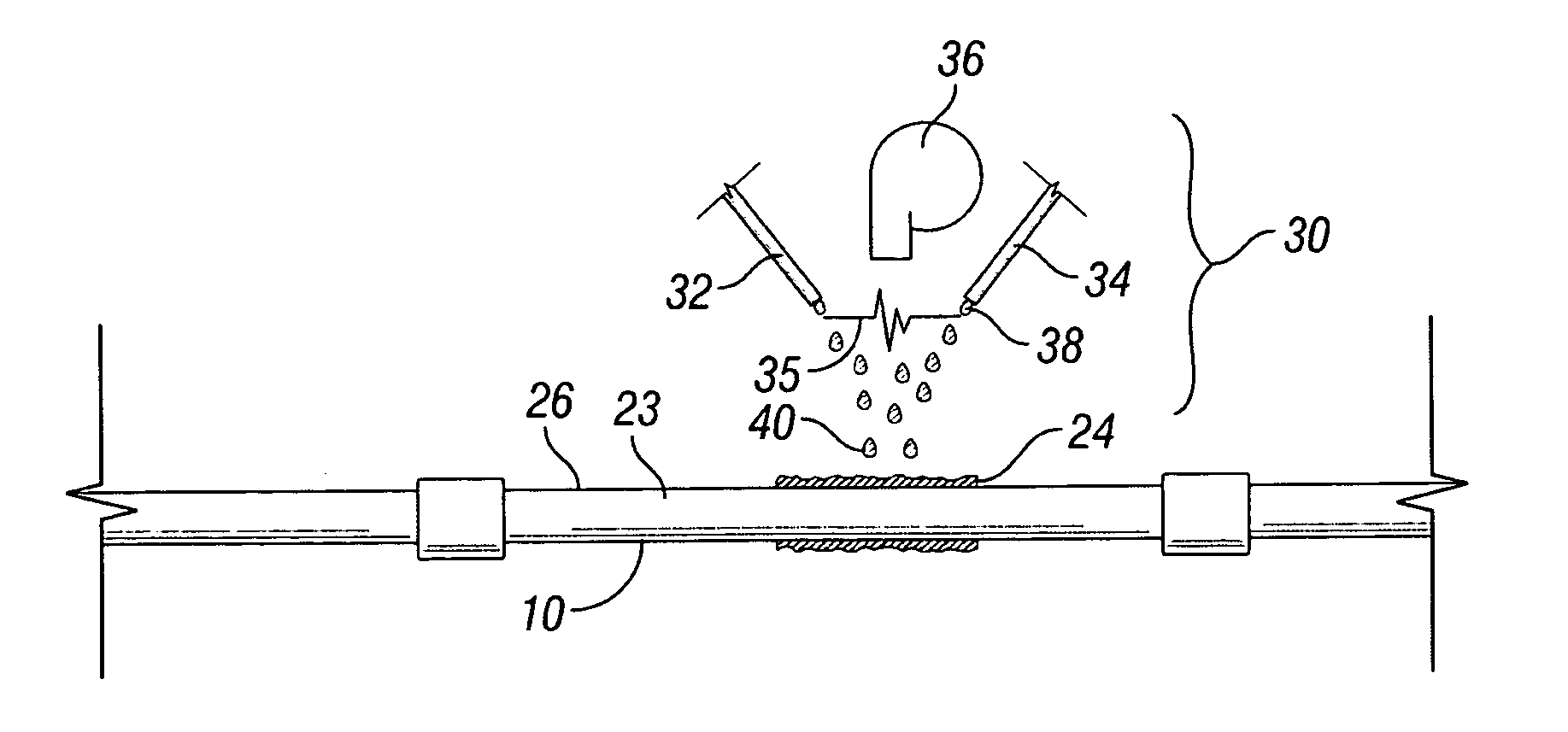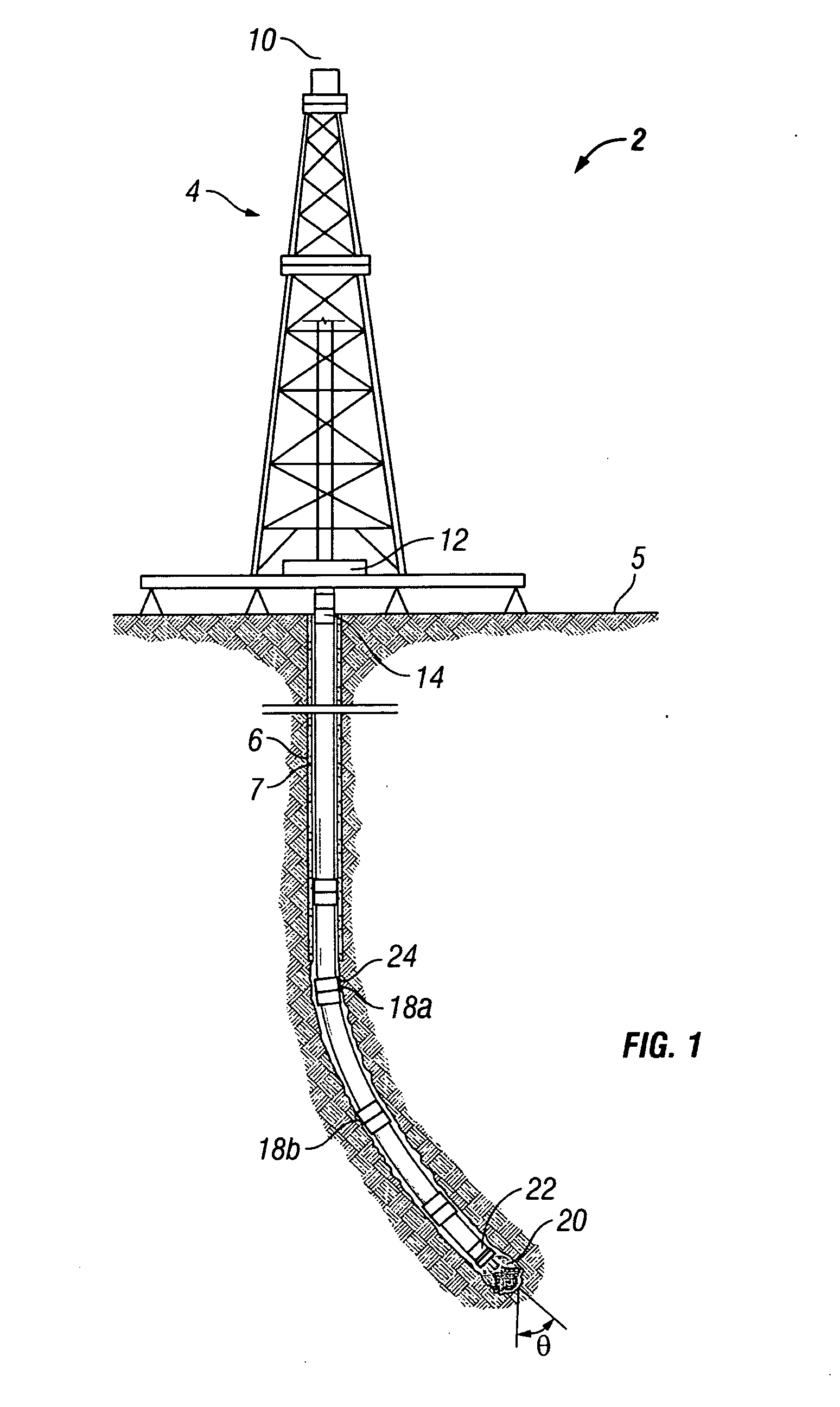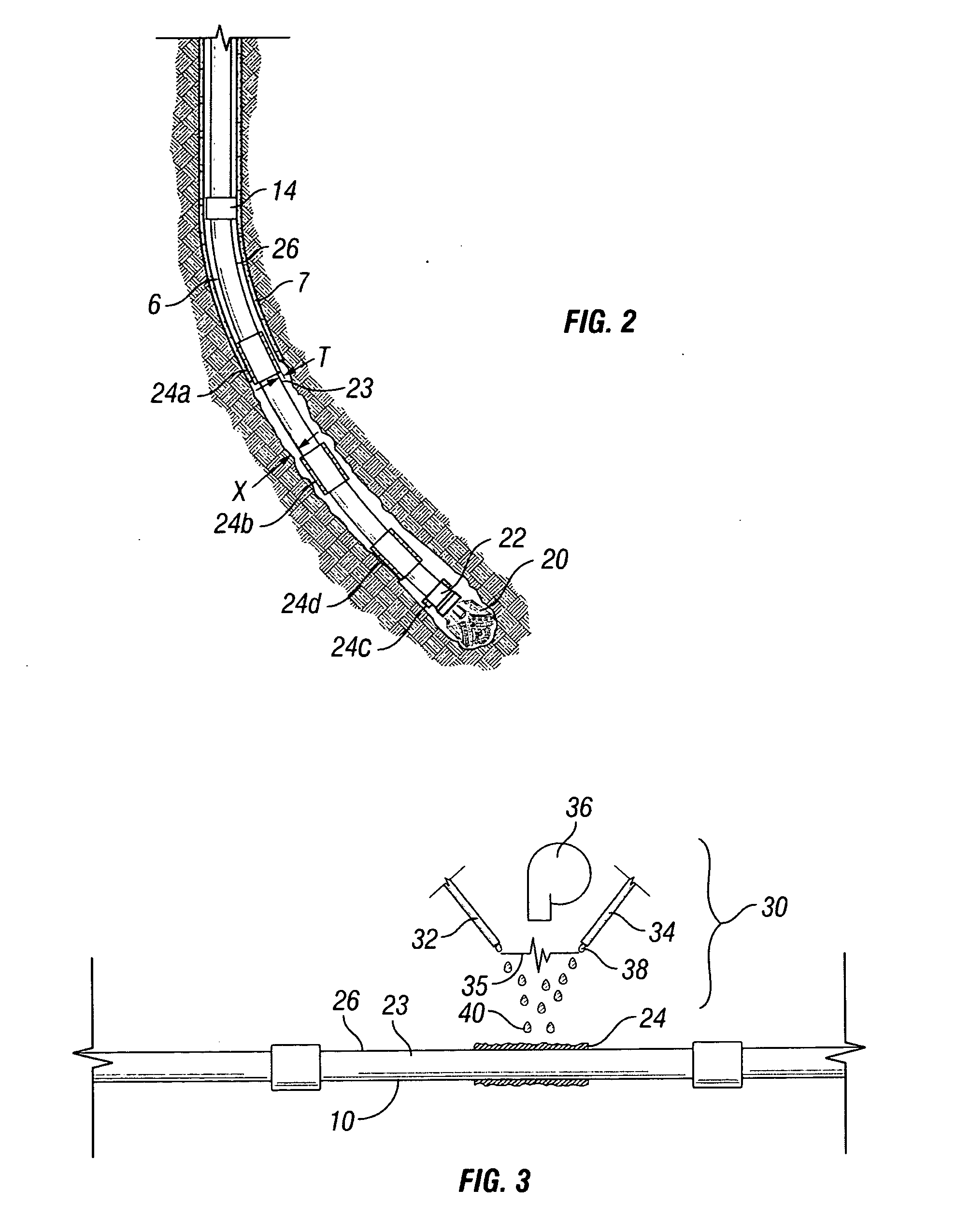Wear resistant layer for downhole well equipment
a technology of wear resistance and downhole well, applied in the direction of coating, fluid removal, cleaning apparatus, etc., can solve the problems of affecting the integrity of the wear mechanism, affecting the wear resistance of the wear resistance layer, so as to reduce the coefficient of friction and increase the wear resistance
- Summary
- Abstract
- Description
- Claims
- Application Information
AI Technical Summary
Benefits of technology
Problems solved by technology
Method used
Image
Examples
Embodiment Construction
[0013]FIG. 1 is a cross-sectional schematic diagram of a drilling rig with an associated downhole assembly in a well bore. A well 2 is generally formed or serviced with a rig 4. The rig is stationed above the well location generally on a surface 5, such a ground surface, a seabed floor, or on a fixed or floating platform. The rig can be a drilling rig, a workover rig, or a service rig, or other rigs, depending on the operation desired. The well 2 includes a wellbore 6 that is generally lined with a casing 7. The casing 7 is generally a steel tubular member. A conduit 10 is used to form or service the well 2. The conduit can be a drilling pipe, coiled tubing, or other tubular goods of various sizes and cross sectional shapes. If the conduit 10 is jointed, a coupling 14 can be used to couple the joints of the conduit together. The term “coupled,”“coupling,” and like terms are used broadly herein and can include any method or device for securing, binding, bonding, fastening, attaching,...
PUM
| Property | Measurement | Unit |
|---|---|---|
| Percent by mass | aaaaa | aaaaa |
| Percent by mass | aaaaa | aaaaa |
| Percent by mass | aaaaa | aaaaa |
Abstract
Description
Claims
Application Information
 Login to View More
Login to View More - R&D
- Intellectual Property
- Life Sciences
- Materials
- Tech Scout
- Unparalleled Data Quality
- Higher Quality Content
- 60% Fewer Hallucinations
Browse by: Latest US Patents, China's latest patents, Technical Efficacy Thesaurus, Application Domain, Technology Topic, Popular Technical Reports.
© 2025 PatSnap. All rights reserved.Legal|Privacy policy|Modern Slavery Act Transparency Statement|Sitemap|About US| Contact US: help@patsnap.com



